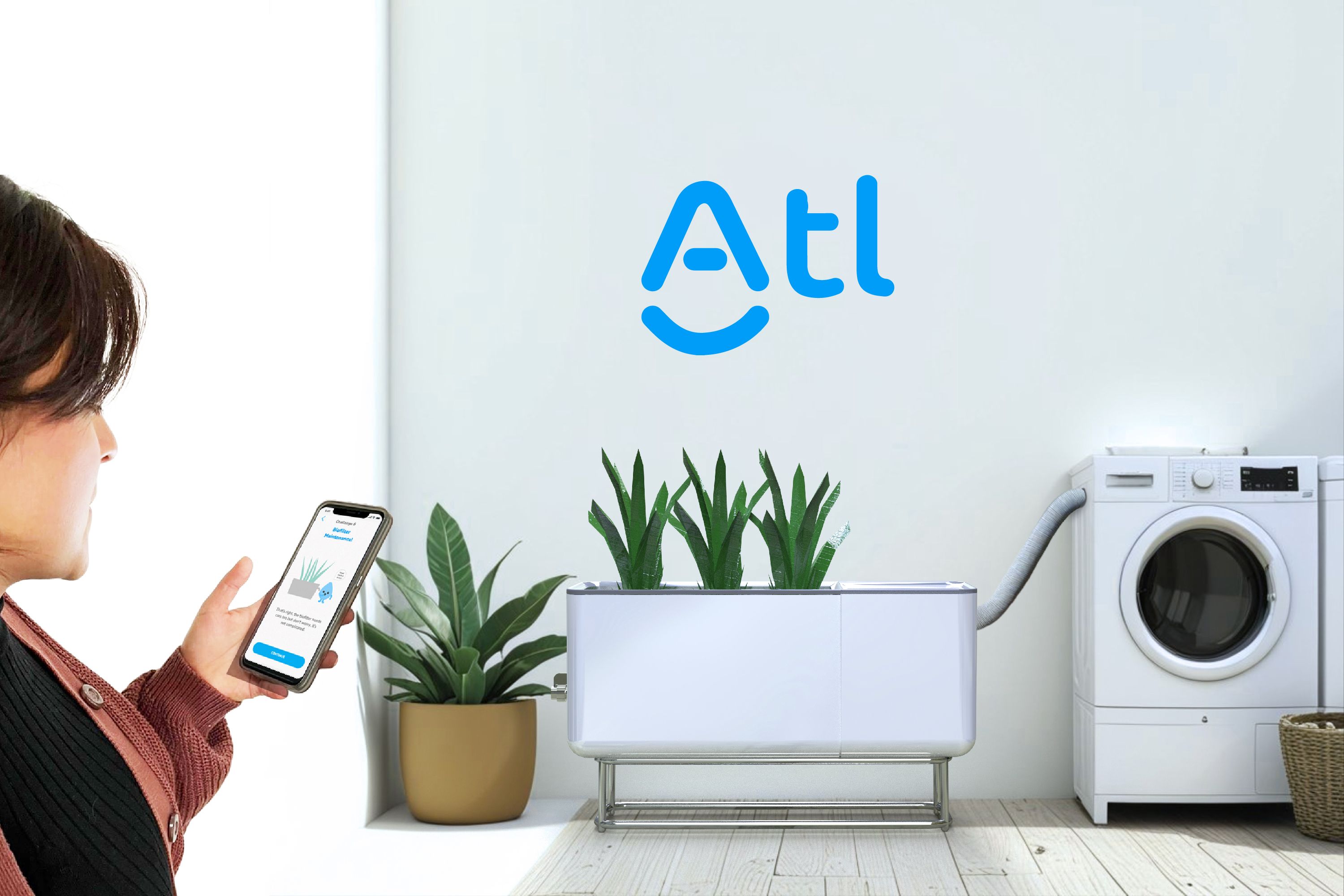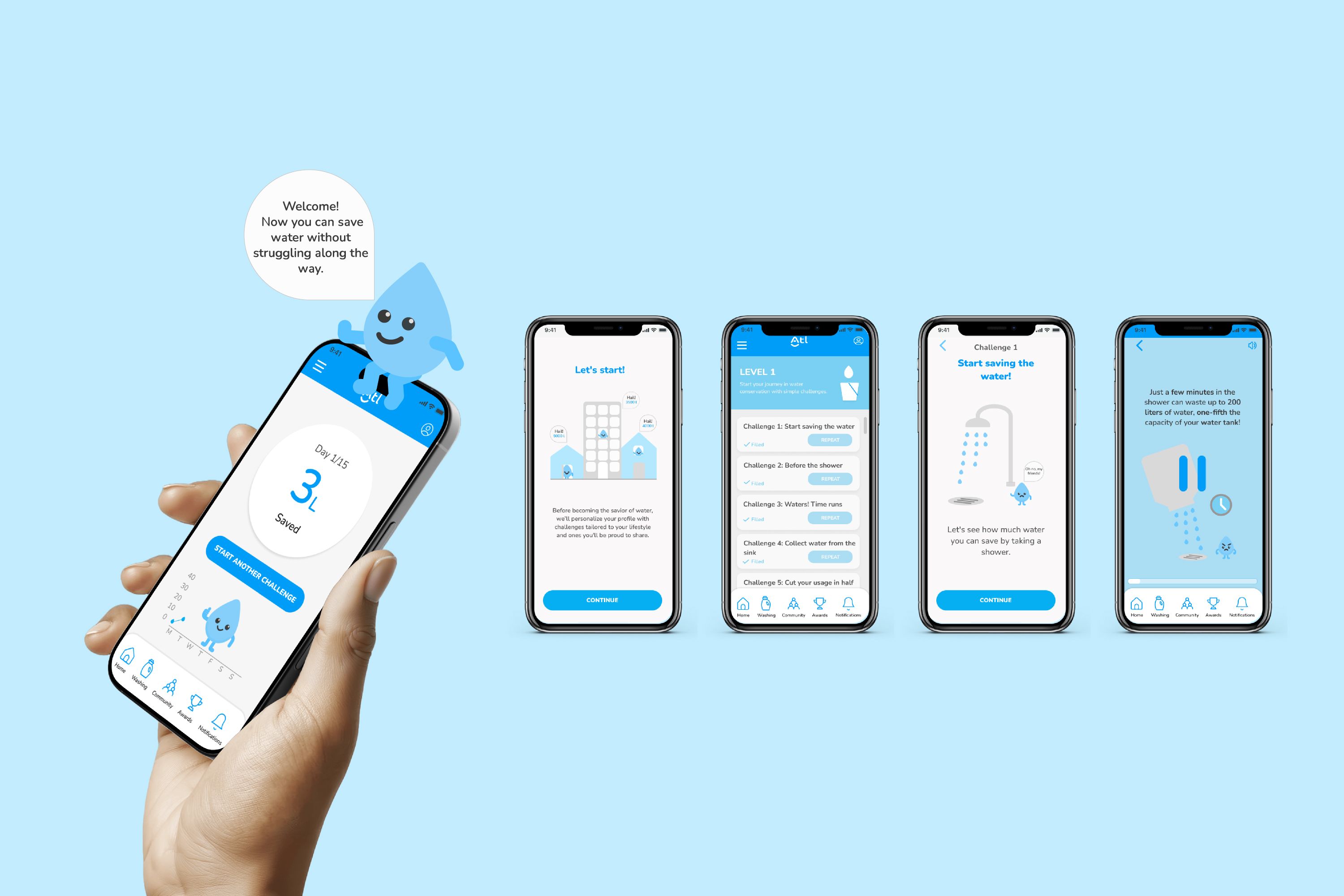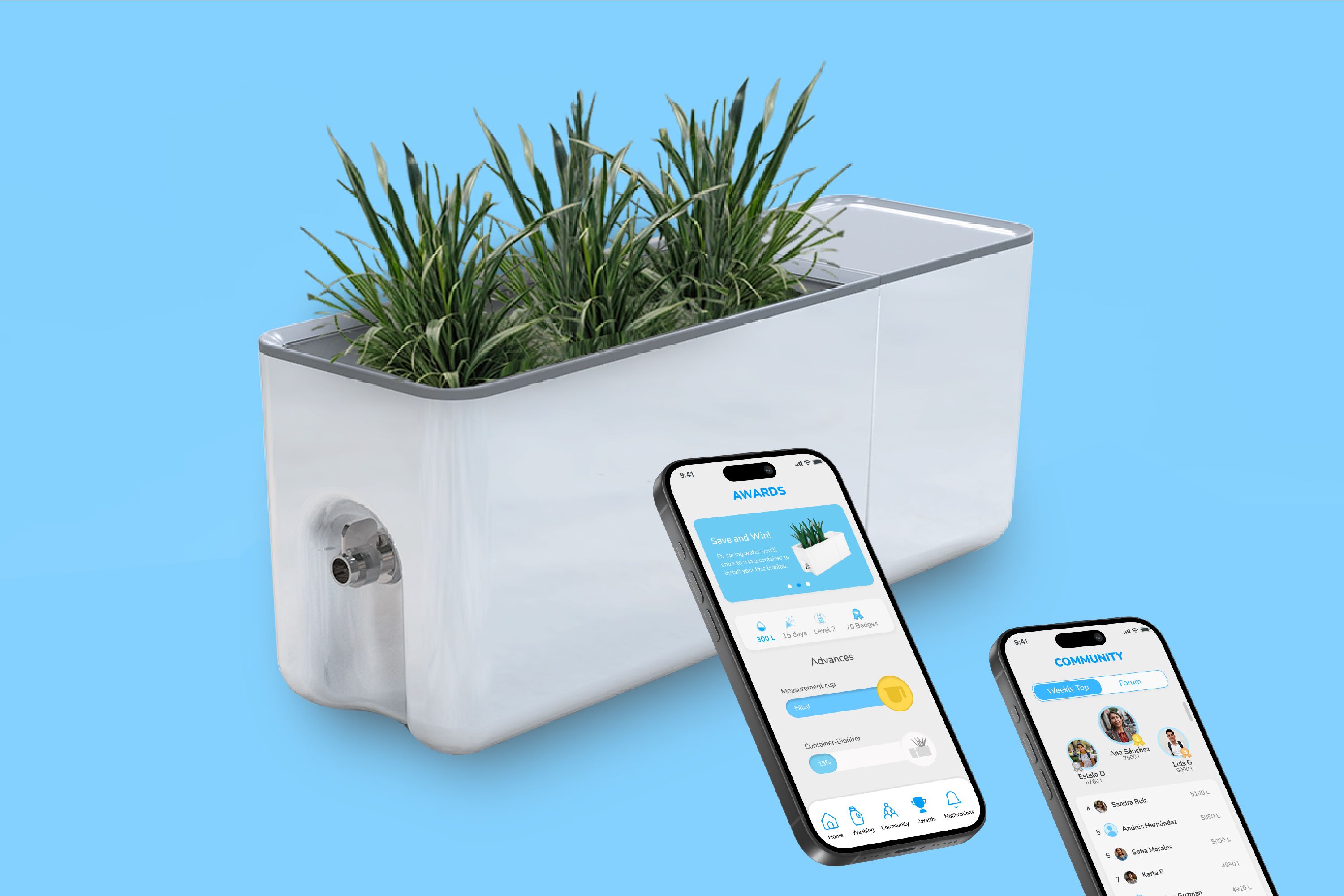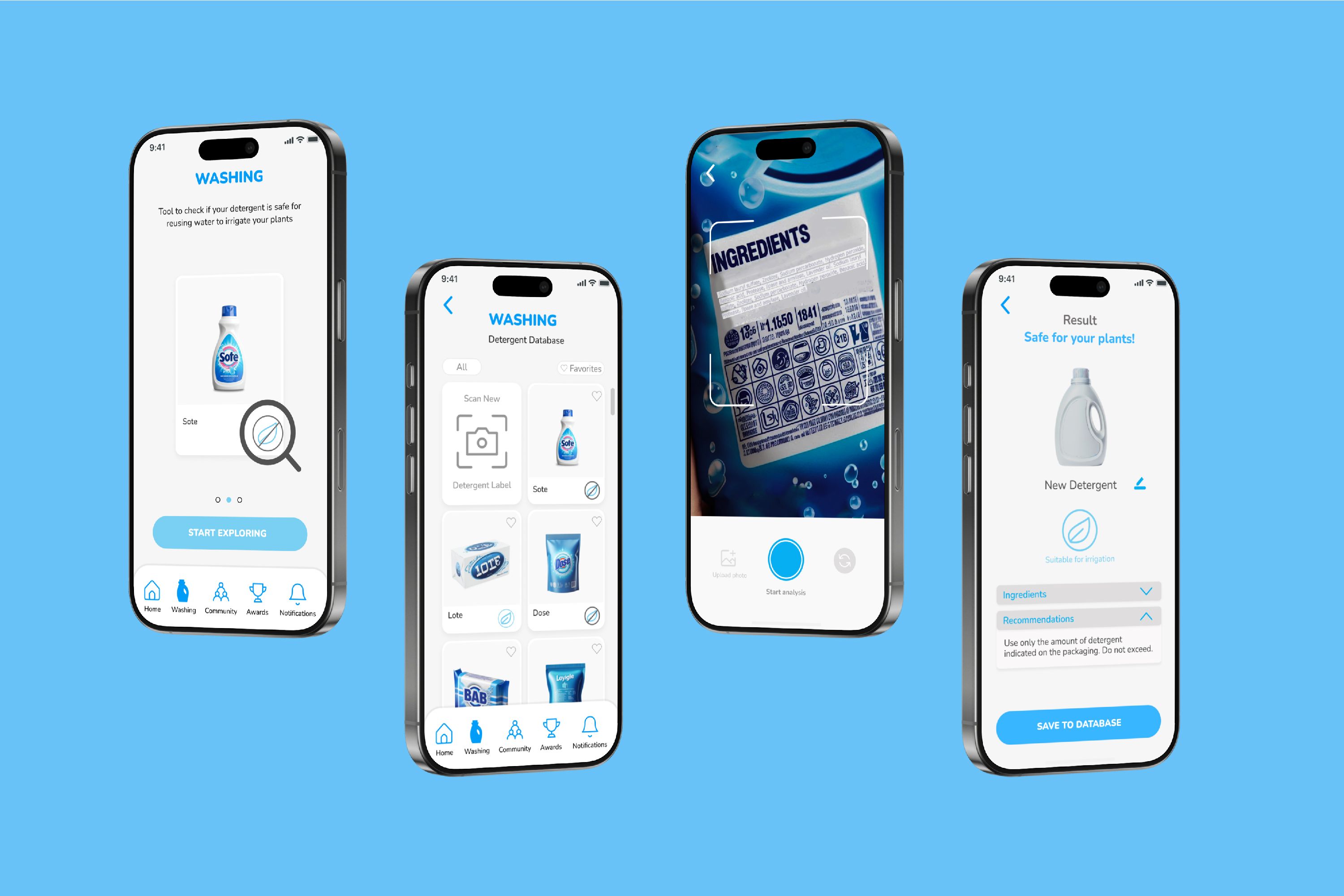
Designers
Ximena Hernández Hernández
Year
2025
Category
New Talent
Country
Mexico
School
Industrial Design Research Center (CIDI)
Teacher
Vanessa Sattele Gunther, Karina Cocho Muñoz

Three questions to the project team
What was the particular challenge of the project from a UX point of view?
The UX challenge was creating a solution that goes beyond providing sustainable tech—it had to connect with users of different awareness, interest, and context. Research revealed that barriers were behavioral, emotional, and structural. How do we motivate someone who's never considered reusing greywater? How do we make it intuitive and adaptable across lifestyles and spaces? That led to designing a modular biofilter as part of a product-service ecosystem. But it wasn't just about the object—it became a catalyst for learning and habit formation. Through challenges, rewards, and a personalized journey, the system invites users into sustainability not through obligation, but empowerment.
What was your personal highlight in the development process? Was there an aha!-moment, was there a low point?
After interviewing experts, I realized that adopting eco-technologies often fails due to people’s habits and responsibilities. My initial idea a conceptual biofilter with a support service would only meet the needs of a small group, excluding many I had interviewed. That pushed me to rethink the scope: should I design for a few or aim for a broader solution? During the app’s low-fidelity prototyping, I realized that content and tests alone wouldn’t inspire real change. Letting go of my core idea was difficult, but listening to users helped me transform the project into an engaging, challenge-based experience. That pivot became my greatest insight—it taught me to trust the process and let user needs lead.
Where do you see yourself and the project in the next five years?
I see myself as a designer who grows continuously from both failures and achievements, everything can be improved. My focus on sustainability goes beyond the environmental: it includes social and economic impact. For this project, that means developing a viable business model and finding an institution to co-create the app, followed by funding to scale ATL regionally. A roadmap outlines this growth, including year-five goals like prototyping the biofilter to assess its real-life feasibility. I aim to offer meaningful, high-quality solutions that truly support the well-being of people, the country, and the planet.


